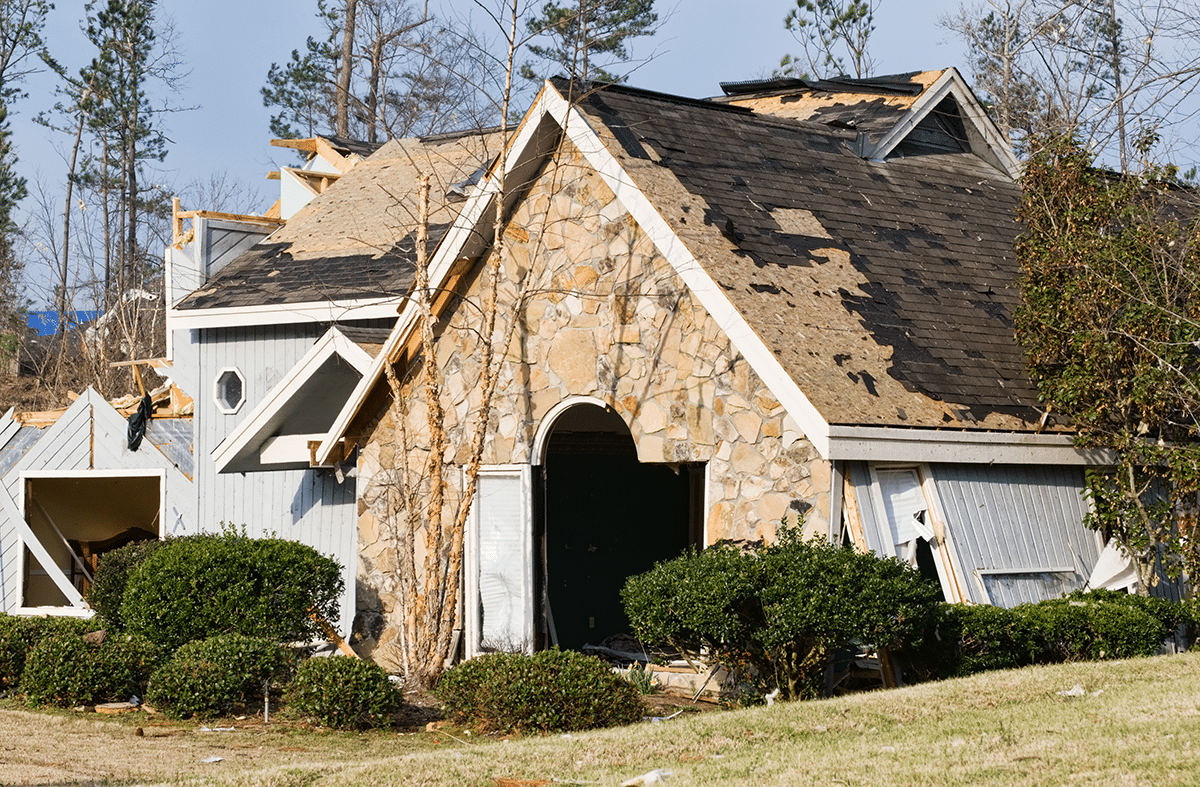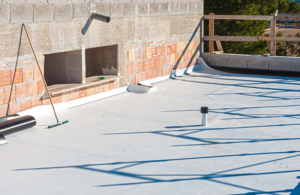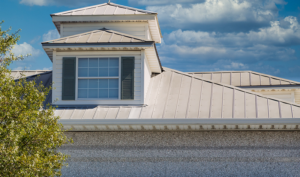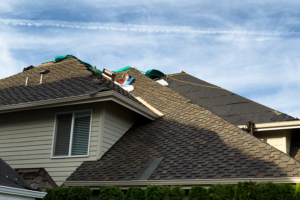Wind damage from unusually high-speed winds and tornadoes is increasing in the United States. Structures built to meet or exceed current model building codes for high-wind regions have a much better chance of surviving tornados and other violent windstorms and not needing roof repair. The Standard Building Code (written and updated by the Southern Building Code Congress International, Inc.) is one source for guidance on building recommendations that help ensure your home can withstand a tornado. Although no house can withstand a direct hit from a severe F4 or F5 tornado, solid construction and products rated for high-wind use can help your home endure many of the more common weather events.
The severity of a tornado is classified using the Enhanced F-scale, rated from F0 to F5 (with F5 being the strongest and most dangerous). Tornadoes designated as F0 and F1 can have 3-second wind gusts of up to 110 mph, but like other bad weather with strong winds, generally, only result in minor roof damage from broken tree limbs and blown-off shingles. F2 and F3 tornadoes can have wind speeds of up to 165 miles per hour, strong enough to overturn cars and mobile homes, tear the roofs off of houses, and twist and uproot trees. Typical tornado damage includes ripped, cracked, or dented siding, doors, roofing shingles, broken windows, and ruined gutter systems. F4 and F5 are deadly tornadoes and the strongest, with wind speeds recorded up to 261 mph. They can measure over a mile wide, causing catastrophic damage to entire communities by leveling homes or pulling them off their foundations. While these storms account for only 1 percent of recorded tornados, they have resulted in more than 70 percent of tornado fatalities.
How To Prepare Your Home For Tornado Season
Some materials can withstand high wind much better than others. The three materials most resistant to a storm are metal panels, specially designed shingles, and concrete tiles. Lets get into it:
Choose the Right Roofing Materials
Metal roofs can offer high wind resistance because of how the panels interlock and overlap when attached to the underlayment. When properly installed, metal panels join so tightly that air doesn’t flow underneath them and cause lift. For the best storm resistance, choose concealed panel fasteners and a four-way interlocking design.
Asphalt shingles can also offer good protection for your house if you choose shingles with a high wind resistance rating. For best tornado protection, choose class H asphalt shingles designed to withstand wind speeds up to 150 mpg. Stone-coated steel shingles are another good option but are more expensive.
Concrete Tiles are a less expensive and more durable alternative to tile roofing. Concrete tiles withstand 120 mph winds and one-inch hail and do well in tornado-prone areas.
Slate has very high durability, but it can be cost-prohibitive and often requires specific roof structures to support the higher weight loading.
Multiple Slopes
While two-slope gable roofs are standard, they are less wind resistant. Flat roofs are also surprisingly not very wind-resistant. Research conducted by the New Jersey Institute of Technology (NJIT) found that roofs with four or more panels tend to perform best when exposed to high winds due to their aerodynamic nature. A popular type of four-slope design is a hip roof, although there are many other multiple-slope styles to choose from.
Design Overhangs Wisely
Roof overhangs perform the vital task of protecting your home’s exterior and your home’s foundation from both water damage and the sun. However, roof overhangs that are too wide can make your entire roofless wind-resistant by creating unsupported surface areas that wind can lift. For the best balance of benefit and risk, overhangs that are 20-inches in width or less are recommended.
Connect Your Roof to Your Walls
When designing a tornado-resistant roof, it is essential to ensure your roof framing is connected to your home’s walls. Many building codes now require hurricane clips and homeowner’s insurance companies now require having a secure roof-to-wall connection to limiting damage from high-force winds. When securely attached to your home walls, the walls’ weight and direct connection to the foundation help keep the roof in place.
Optimize Your Roof Sheathing
While it is essential to choose the right roof shingles or panels, even the most wind-resistant roof material cannot protect your home adequately if your roof sheathing and the decking are not structurally sound. According to the Louisiana State University College of Agriculture, the most wind-resistant roof decking should consist of 7/16-inch or 19/32-inch plywood. The decking should be held in place with specially designed nails instead of staples. An extra waterproof underlayment on top of the decking can protect your home from water damage that could occur if any shingles or tiles do blow off during a tornado that may be followed by rain.
Install a Moveable Flap
Another step is Installing a movable flap next to the seam of your roof, which helps stabilize air pressure. Qualified roofing contractors can do a comprehensive roof inspection and help you make the best evaluation for your house.
RESOURCES
Blue Nail Roofing has a Master Elite contractor status awarded by the largest roofing manufacturer in North America, GAF. Only 2% of contractors in the US meet the rigorous standards to achieve this status, which means you can be assured you are making a good choice when selecting the professionals at Blue Nail Roofing to execute your home and business roofing repairs. Call today to schedule a professional evaluation!
Copyright © 2020 Blue Nail Enterprises. All rights reserved. | Privacy Policy
Let Us Nail Your Project!
Send us a little information about your roofing or home improvement needs, and an expert will reach out shortly.







